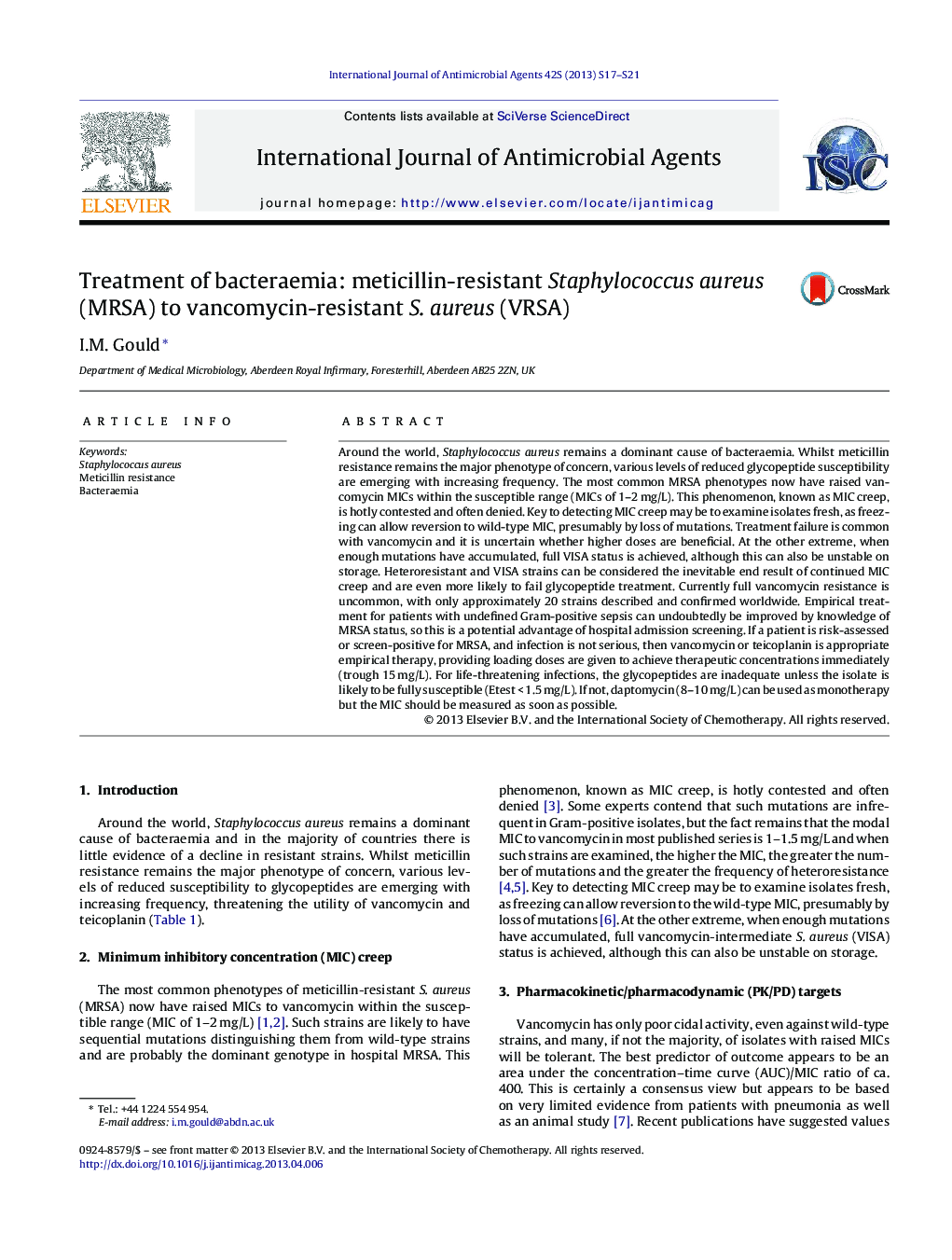| کد مقاله | کد نشریه | سال انتشار | مقاله انگلیسی | نسخه تمام متن |
|---|---|---|---|---|
| 3359199 | 1591793 | 2013 | 5 صفحه PDF | دانلود رایگان |

Around the world, Staphylococcus aureus remains a dominant cause of bacteraemia. Whilst meticillin resistance remains the major phenotype of concern, various levels of reduced glycopeptide susceptibility are emerging with increasing frequency. The most common MRSA phenotypes now have raised vancomycin MICs within the susceptible range (MICs of 1–2 mg/L). This phenomenon, known as MIC creep, is hotly contested and often denied. Key to detecting MIC creep may be to examine isolates fresh, as freezing can allow reversion to wild-type MIC, presumably by loss of mutations. Treatment failure is common with vancomycin and it is uncertain whether higher doses are beneficial. At the other extreme, when enough mutations have accumulated, full VISA status is achieved, although this can also be unstable on storage. Heteroresistant and VISA strains can be considered the inevitable end result of continued MIC creep and are even more likely to fail glycopeptide treatment. Currently full vancomycin resistance is uncommon, with only approximately 20 strains described and confirmed worldwide. Empirical treatment for patients with undefined Gram-positive sepsis can undoubtedly be improved by knowledge of MRSA status, so this is a potential advantage of hospital admission screening. If a patient is risk-assessed or screen-positive for MRSA, and infection is not serious, then vancomycin or teicoplanin is appropriate empirical therapy, providing loading doses are given to achieve therapeutic concentrations immediately (trough 15 mg/L). For life-threatening infections, the glycopeptides are inadequate unless the isolate is likely to be fully susceptible (Etest < 1.5 mg/L). If not, daptomycin (8–10 mg/L) can be used as monotherapy but the MIC should be measured as soon as possible.
Journal: International Journal of Antimicrobial Agents - Volume 42, Supplement 1, June 2013, Pages S17–S21